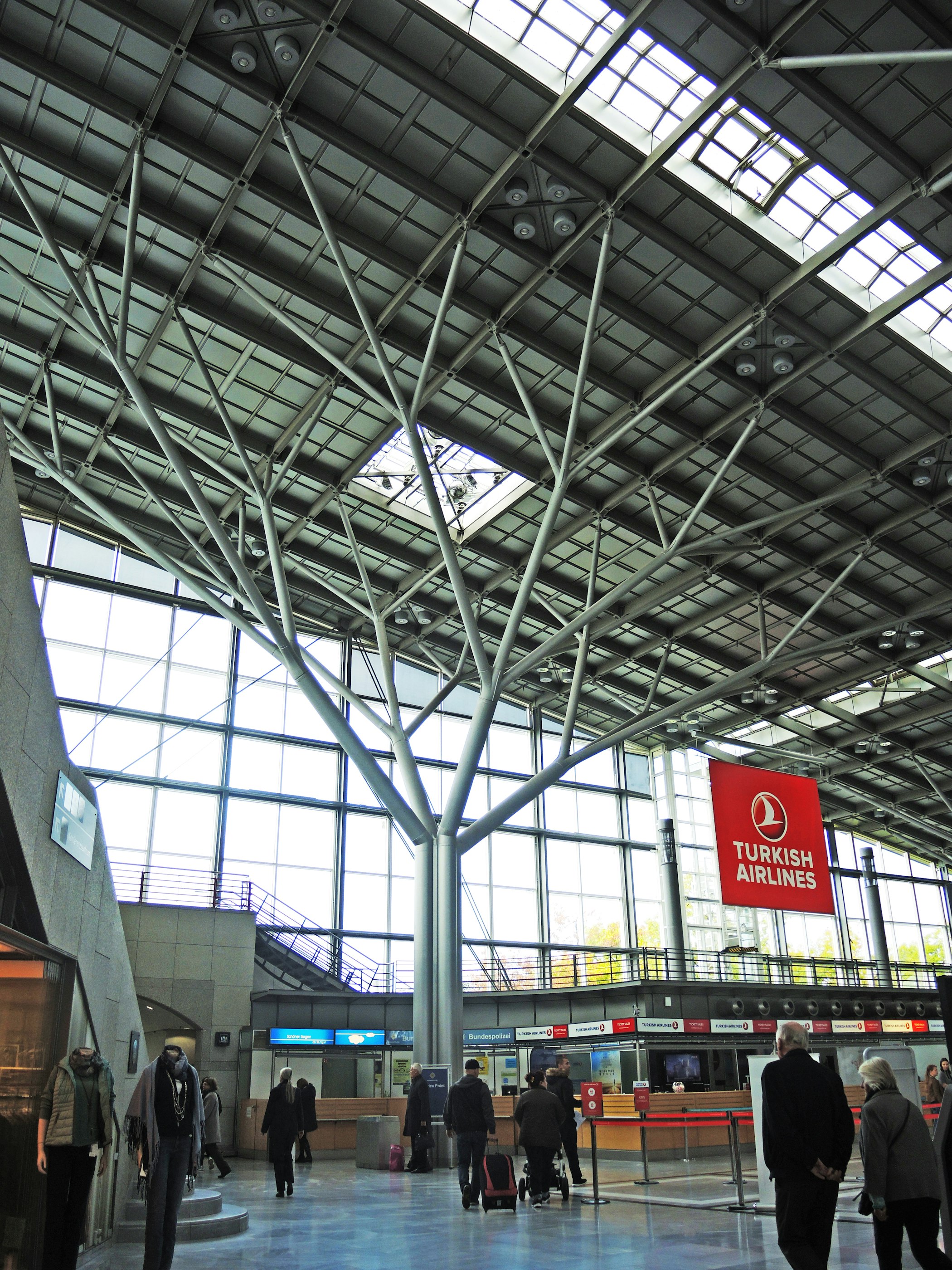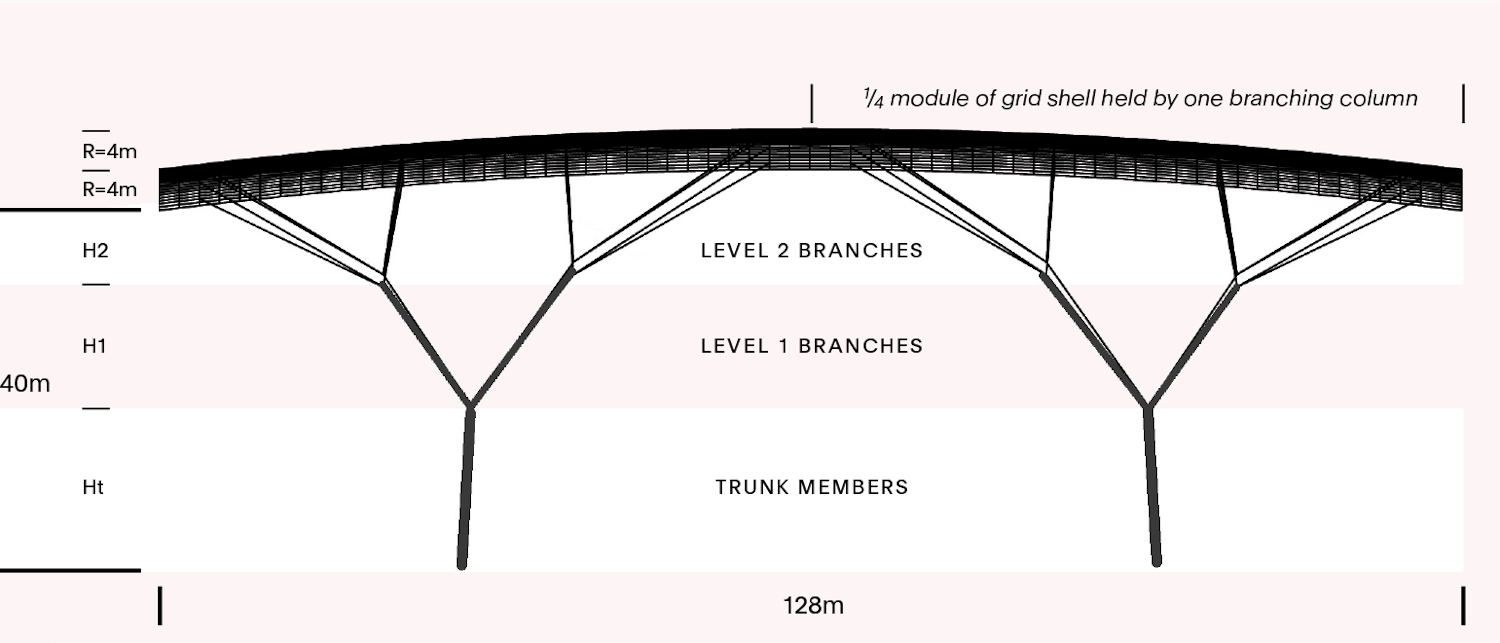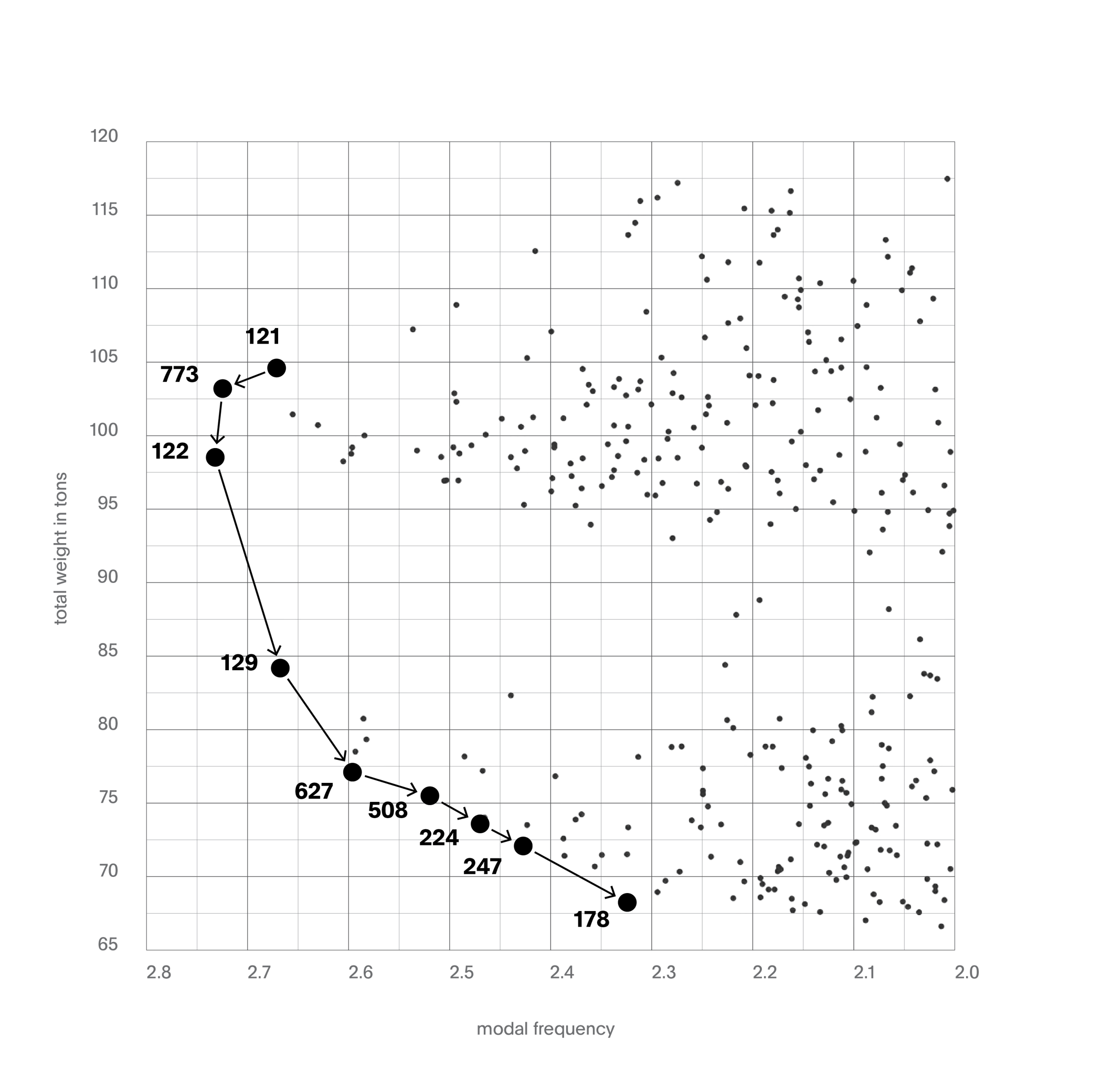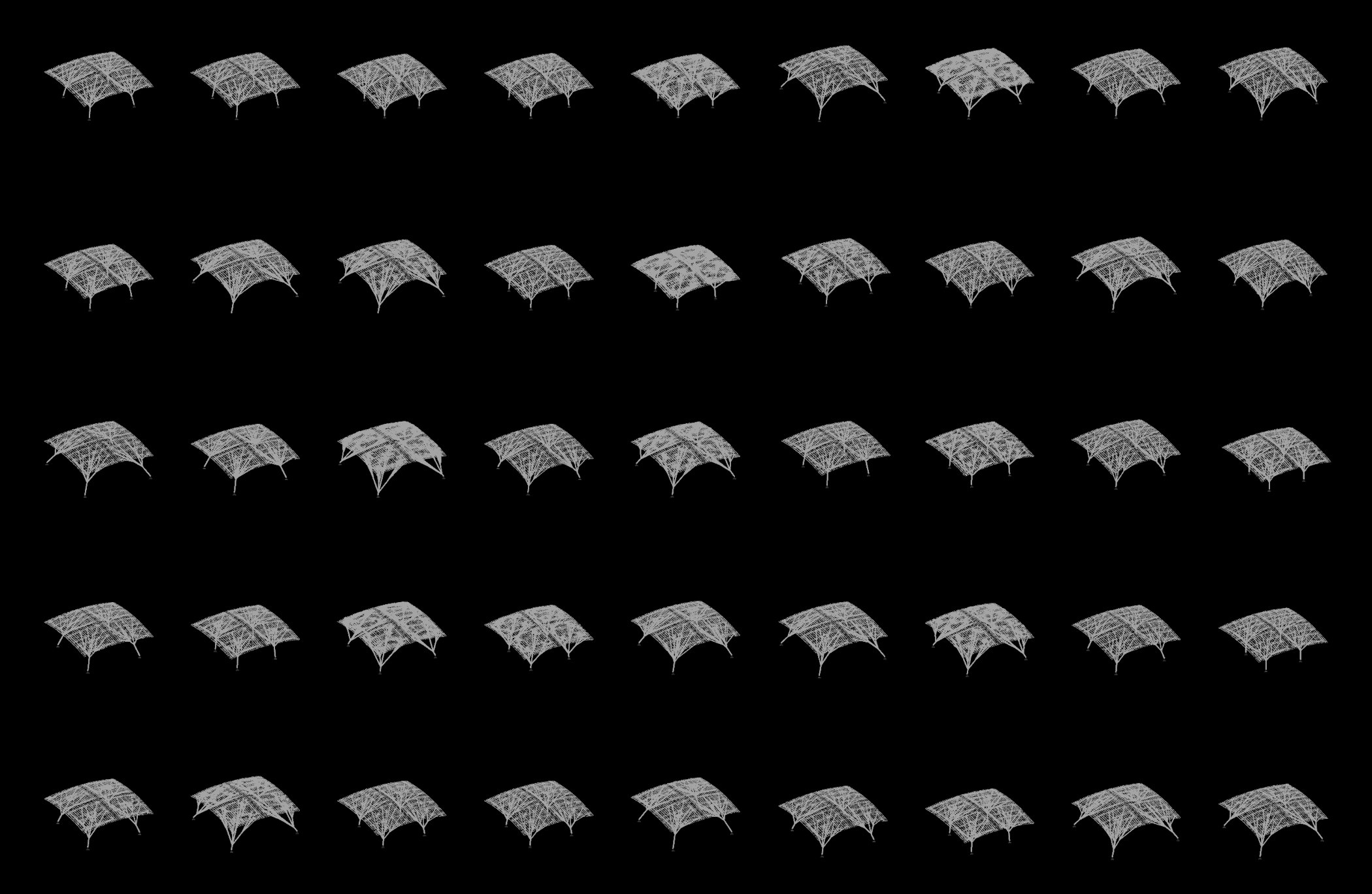Branching Columns
Branching columns are supporting structures that branch outward to support a surface structure. Like a tree, the branches usually stem from a single “trunk”. Numerous built examples have been produced since the initial inspiring studies made by Frei Otto in the early 1960s.

[Fig. 1] The Stuttgart Airport Terminal 3, von Gerkan, Marg & Partner, Schlaich Bergermann engineering.
The optimal form of these structures depends on both the branching topology and the load applied. Different methods, either with models or with programs, can be used to find the best form. For example, tension-only tread models can be used to investigate branching geometries that will perform as pure compression structures.
The form exploration of the structure shown in this project was carried out with ParaGen, an exploration method based on a Non-Destructive Dynamic Population Genetic Algorithm (NDDP-GA). The method cycles through parametrically generated forms produced by the breeding of selected solutions. The forms are then evaluated and results are stored in a SQL database for further breeding and exploration.

[Fig. 2] A tension-only tread model to explore compressive geometries.

[Fig. 3] The ParaGen exploration cycle
In this form exploration project, a set of four branching columns, along with a single-layer grid shell, are modeled parametrically to cover a 40 × 40m area. This is a similar area per column as in the Stuttgart airport mentioned above; however, in Stuttgart the columns have four levels, whereas in this example there are only three levels: base column, first-level branches, and second-level branches.

[Fig. 4] The grid shell and branching columns showing the variables and constants.
In this exploration, a little over five hundred solutions were generated. They can be interactively explored at http://141.211.204.183/gcga39/
You can use the ParaGen interface to explore solutions using sorting and filters. This video shows how:
There are also graphing functions in ParaGen that help find well-performing solutions. A Pareto front can be defined for two or more competing criteria such as least weight and stiffness. This video generates a Pareto front:
The video at the end of this article—Trees on the Pareto Frontier—views the solutions on the Pareto Frontier as it follows the path from heaviest to lightest structure.

[Fig. 5] The path down the Pareto Frontier
As you run the parametric form generation and analysis software, any images and data can be harvested and stored in the SQL database. In this example, we captured 3D VRML files which were then used to view the solutions along the Pareto Frontier.
These files are viewable using Octaga and available for download here:
121.wrl 122.wrl 129.wrl 178.wrl 224.wrl 247.wrl 508.wrl 627.wrl 773.wrl
